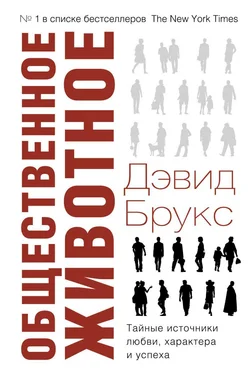Roy E Baumeister, The Cultural Animal: Human Nature, Meaning, and Social Life (Oxford: Oxford University Press, 2005), 116.
Joseph Т. Hallinan, Why We Make Mistakes: How We Look Without Seeing, Forget Things in Seconds, and Are All Pretty Sure We Are Way Above Average (New York: Broadway Books, 2009), 47.
Natalie Angier, «Birds Do It. Bees Do It. People Seek the Keys to It,» New York Times, April 10, 2007.
Baumeister, 115-16.
Barry R. Komisaruk, Carlos Beyer-Flores, and Beverly Whipple, The Science of the Orgasm (Baltimore, MD: Johns Hopkins University Press, 2006), 72.
Regina Nuzzo, «Science of the Orgasm,» Los Angeles Times, February 11, 2008.
Mary Roach, Bonk: The Curious Coupling of Science and Sex (New York: W W Norton & Co., 2008), 237.
Regina Nuzzo, «Science of the Orgasm.»
Melvin Konner, The Tangled Wing: Biological Constraints on the Human Spirit (New York: Henry’ Holt & Co., 2002), 291.
Joseph LeDoux, The Synaptic Self: How Our Brains Become Who We Are (New York: Viking, 2002), 67.
Jeffrey М. Schwartz and Sharon Begley, The Mind and the Brain: Neuroplasticity and the Power of Mental Force (New York: HarperCollins, 2002), 111.
Kim Y. Masibay, «Secrets of the Womb: Life’s Most Mind-Blowing Journey: From Single Cell to Baby in Just 266 Days,» in Science World, September 13, 2002.
Betsy Bates, «Grimaces, Grins, Yawns, Cries: 3D/4D Ultrasound Captures Fetal Behavior,» Ob. Gyn. News, April 15, 2004.
Janet L. Hopson, «Fetal Psychology,» Psychology Today, September 1, 1998.
Bruce Е. Wexler, Brain and Culture: Neurobiology, Ideology, and Social Change (Cambridge, MA: MIT Press, 2006), 97.
Bruce Bower, «Newborn Babies May Cry in Their Mother Tongues,» Science News, December 5, 2009.
Janet L. Hopson, «Fetal Psychology».
Otto Friedrich, Melissa Ludtke, and Ruth Mehrtens Calvin, «What Do Babies Know?», Time, August 15, 1983.
Frederick Wirth, Prenatal Parenting: The Complete Psychological and Spiritual Guide to Loving Your Unborn Child (New York: HarperCollins, 2001), 14.
Alison Gopnik, The Philosophical Baby: What Children’s Minds Tell Us About Truth, Love, and the Meaning of Life (New York: Farrar, Straus, & Giroux, 2009), 205.
Hillary Mayell, «Babies Recognize Faces Better Than Adults, Study Says,» National Geographic, May 22, 2005.
Louis Cozolino, The Neuroscience of Human Relationships: Attachment and the Developing Social Brain (New York: W. W. Norton & Co., Inc., 2006), 103.
Edward О. Wilson, Consilience: The Unity of Knowledge (New York: Alfred A. Knopf, 1998), 145.
John Medina, Brain Rules: 12 Principles for Surviving and Thriving at Work, Home, and School (Seattle, WA: Pear Press, 2008), 197.
Katherine Ellison, The Mommy Brain: How Motherhood Makes You Smarter (New York: Basic Books, 2005), 21.
Medina, 197.
Jill Lepore, «Baby Talk,» The New Yorker, June 29, 2009.
David Biello, «The Trouble with Men,» Scientific American, September 16, 2007.
Wexler, 111.
Alva Noë, Out of Our Heads: Why You Are Not Your Brain and Other Lessons from the Biology of Consciousness (New York: Hill & Wang, 2009), 30-31.
Wexler, 90.
Robin Karr-Morse and Meredith S. Wiley, Ghosts from the Nursery: Tracing the Roots of Violence (New York: Atlantic Monthly Press, 1997), 27.
H. M. Skeels and H. B. Dye, «А Study of the Effects of Different Stimulation on Mentally Retarded Children,» in Proceedings and Addresses of the American Association of Mental Deficiency, 44 (1939), 114-36.
Gordy Slack, «I Feel Your Pain,» Salon, November 5, 2007.
Marco Iacoboni, Mirroring People: The New Science of How We Connect with Others (New York: Farrar, Straus & Giroux, 2008), 26.
Richard Restak, The Naked Brain: How the Emerging Neurosociety Is Changing How We Live, Work, and Love (New York: Three Rivers Press, 2006), 58.
Michael S. Gazzaniga, Human: The Science Behind What Makes Us Human (New York: Harper Perennial, 2008), 178.
Iacoboni, 50.
Iacoboni, 112-14.
Steven Johnson, Mind Wide Open: Your Brain and the Neuroscience of Everyday Life (New York: Scribner, 2004), 120.
Johnson, 119.
Johnson, 120-21.
Raymond Manin and John Barresi, The Rise and Fall of Soul and Self: An Intellectual History oi Personal Identity (New York: Columbia University Press, 2006), 184.
Alison Gopnik, Andrew N. Meltzoff, and Patricia K. Kuhl, The Scientist in the Crib: What Early Learning Tells Us About the Mind (New York: Harper Perennial, 1999), 85.
Alison Gopnik, The Philosophical Baby: What Children's Minds Tell Us About Truth, Love, and the Meaning of Life (New York: Farrar, Straus & Giroux, 2009), 17.
Gopnik, Meltzoff, and Kuhl, 46.
Gopnik, 145.
Gopnik, 124.
Gopnik, 152.
Gopnik, 129.
John Bowlby, Loss: Sadness and Depression (New York: Basic Books, 1980), 229.
Margaret Talbot, «The Baby Lab,» The New Yorker, September 5, 2006.
Gopnik, Meltzoff, and Kuhl, 69.
Gopnik, 82-83.
Jeffrey M. Schwartz and Sharon Begley, The Mind and the Brain: Neuroplasticity and the Power of Mental Force (New York: HarperCollins, 2002), 117.
Schwartz and Begley, 111.
Thomas Carlyle Dalton and Victor W. Bergenn, Early Experience, the Brain, and Consciousness: An Historical and Interdisciplinary Synthesis (New York: Lawrence Erlbaum Associates, 2007), 91.
Jeff Hawkins and Sandra Blakeslee, On Intelligence (New York: Times Books, 2004), 34.
Читать дальше












